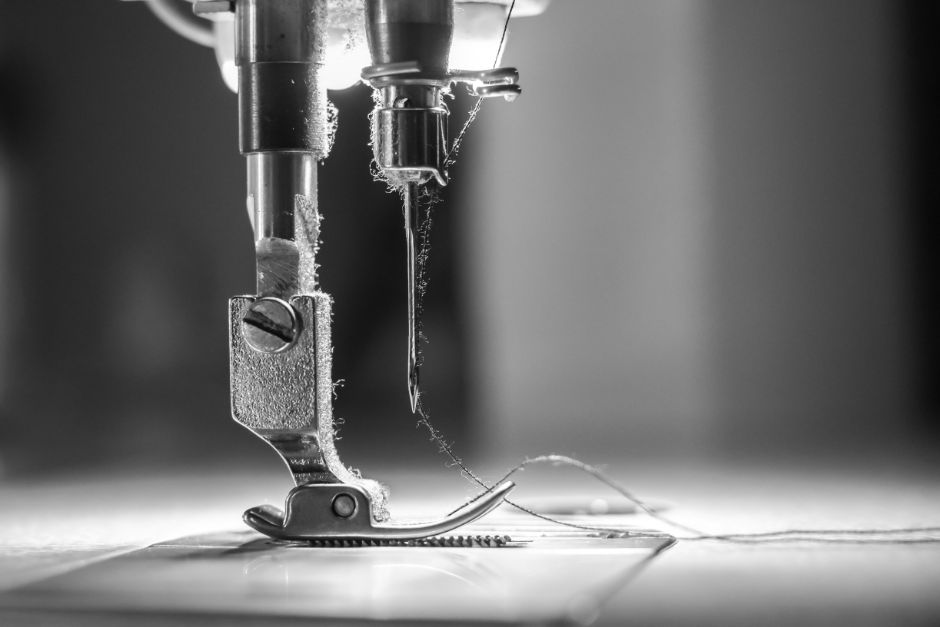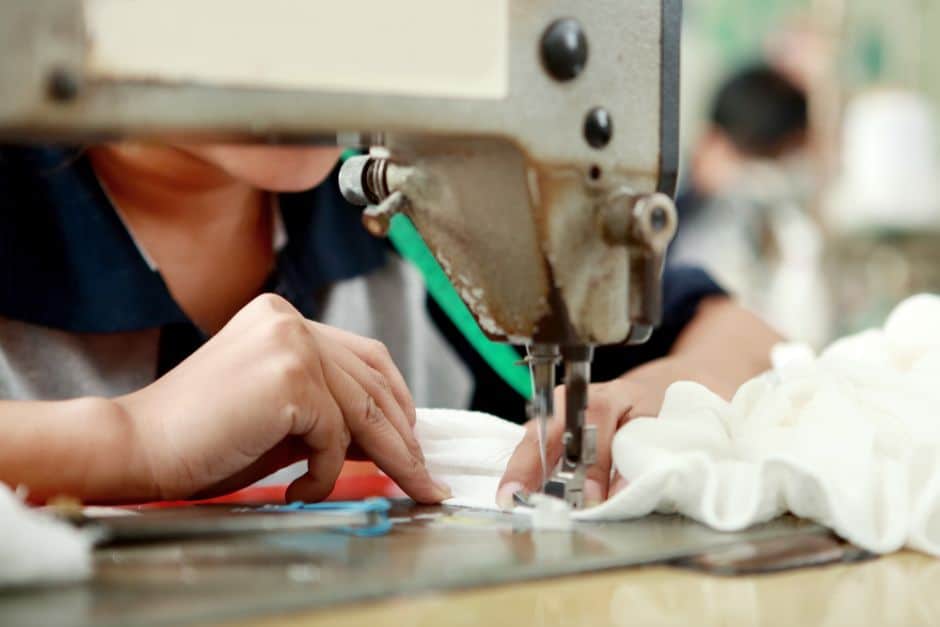An Overview of Industrial Sewing Techniques

Table of Contents
- Introduction
- Lock Stitch Industrial Sewing Techniques
- Chain Stitch Techniques
- Overlock Stitch Techniques
- Cover Stitch Industrial Sewing Techniques
- Other Industrial Sewing Techniques
- Material Selection for Industrial Sewing Techniques
- Vinyl Technology Can Help
Lock Stitch Industrial Sewing Techniques
One of the most fundamental and widely used industrial sewing techniques is the lock stitch. This technique employs two threads, one on top and one on the bottom, which interlock to form a strong and durable seam. This method is prevalent in various industries and applications due to its reliability and resilience.
Lock stitch finds extensive use in the manufacturing of garments, where it ensures that seams can withstand the stresses of daily wear and tear. It is an equally crucial industrial sewing technique in the upholstery industry, so that furniture coverings remain intact and visually appealing. Additionally, the lock stitch is indispensable in the production of various custom industrial products, where it contributes to the overall structural integrity and longevity of the items.
Chain Stitch Techniques
In contrast to the lock stitch, the chain stitch employs a single thread that loops through the fabric to create the stitch. Renowned for its speed and adaptability, the chain stitch is a popular industrial sewing technique.
The inherent flexibility of this technique allows it to conform to different materials and contours, making it ideal for tasks such as sewing stretchy fabrics and creating decorative stitching. However, it is essential to note that the chain stitch is generally less secure than the lock stitch, as the stitches are not interlocked.
While it is often favored for hems and decorative elements, it may not be the optimal industrial sewing technique for seams that require exceptional strength and durability.
Overlock Stitch Techniques
The overlock stitch, a versatile technique employed in various industrial sewing applications, utilizes multiple threads to create a seam that encloses the raw edges of the fabric. This distinctive characteristic serves a dual purpose: preventing the fabric from fraying and providing a clean and professional finish.
This industrial sewing technique is frequently used in garment manufacturing, particularly for items such as t-shirts, dresses, and sportswear. Its ability to create a seam that stretches with the fabric makes it an ideal choice for activewear and other garments that require flexibility and comfort. Additionally, the overlock stitch is frequently used in home textiles, such as bed sheets and curtains, to create a neat and durable edge finish.
Cover Stitch Industrial Sewing Techniques
The cover stitch, a specialized industrial sewing technique, employs two or three needles and a looper thread to create a flat, durable, and elastic seam. This unique stitch formation is characterized by parallel rows of stitching on the top side of the fabric, while the underside features a looped stitch that allows for stretch and flexibility.
The cover stitch is particularly well-suited for activewear, swimwear, and underwear, where it provides a secure and comfortable seam that can withstand repeated stretching and movement. Additionally, the cover stitch is often used in the industrial manufacturing of other garments, such as t-shirts and polo shirts, to reinforce hems and necklines, ensuring a professional and long-lasting finish.

Other Industrial Sewing Techniques
Beyond the techniques above, industrial sewing encompasses many specialized stitches, each tailored to specific applications.
The bar tack is a reinforcement stitch commonly used to strengthen areas of high stress, such as pocket corners and belt loops.
The zigzag stitch, with its characteristic back-and-forth motion, is often employed for sewing stretchy fabrics, creating decorative effects, and finishing raw edges.
The blindstitch, a nearly invisible stitch, is a frequently used industrial sewing technique for hemming garments and attaching linings.
These are just a few examples of the diverse range of industrial sewing techniques available, each playing a crucial role in creating high-quality, durable products.
Material Selection for Industrial Sewing Techniques
The choice of materials in industrial sewing is a critical factor that can significantly impact the quality, durability, and performance of the final product. Different materials have unique properties that make them suitable for specific applications.
For instance, heavy-duty fabrics like canvas and denim are often used for workwear and protective gear due to their strength and resistance to abrasion. In contrast, lightweight and breathable fabrics like cotton and linen are preferred for garments designed for everyday wear.
In addition to the fabric itself, the choice of thread plays a crucial role in choosing the industrial sewing technique. Different thread types offer varying levels of strength, durability, and elasticity. For instance, nylon thread is known for its strength and resistance to moisture, making it a popular choice for outdoor gear and marine applications like marine fuel bladders. Polyester thread, on the other hand, is valued for its resistance to UV light and colorfastness, making it suitable for products that will be exposed to sunlight.
The selection of needles is also a key consideration in industrial sewing techniques. Different needle types are designed for specific fabric types and thread thicknesses. Choosing the wrong needle can lead to skipped stitches, thread breakage, or even damage to the fabric. Therefore, it is essential to carefully match the needle to the materials being sewn.
Vinyl Technology Can Help
Understanding the nuances of various industrial sewing techniques and material choices is essential for anyone involved in product development or manufacturing. By selecting the right combination of techniques and materials, companies can create products that are not only visually appealing but also durable, functional, and safe.
Vinyl Technology also specializes in creating other products such as pneumatic pillows, water storage bags, and even anti-G suits.
If you are looking for a partner who can help you navigate the complexities of industrial sewing techniques and material selection, look no further than Vinyl Technology. With decades of experience in RF welding and custom industrial sewing services, we have the expertise and capabilities to create custom-made products that meet the highest standards of quality and performance.
Whether you need assistance with prototyping, small-batch production, or large-scale manufacturing, our team of skilled professionals is ready to help you bring your vision to life.

